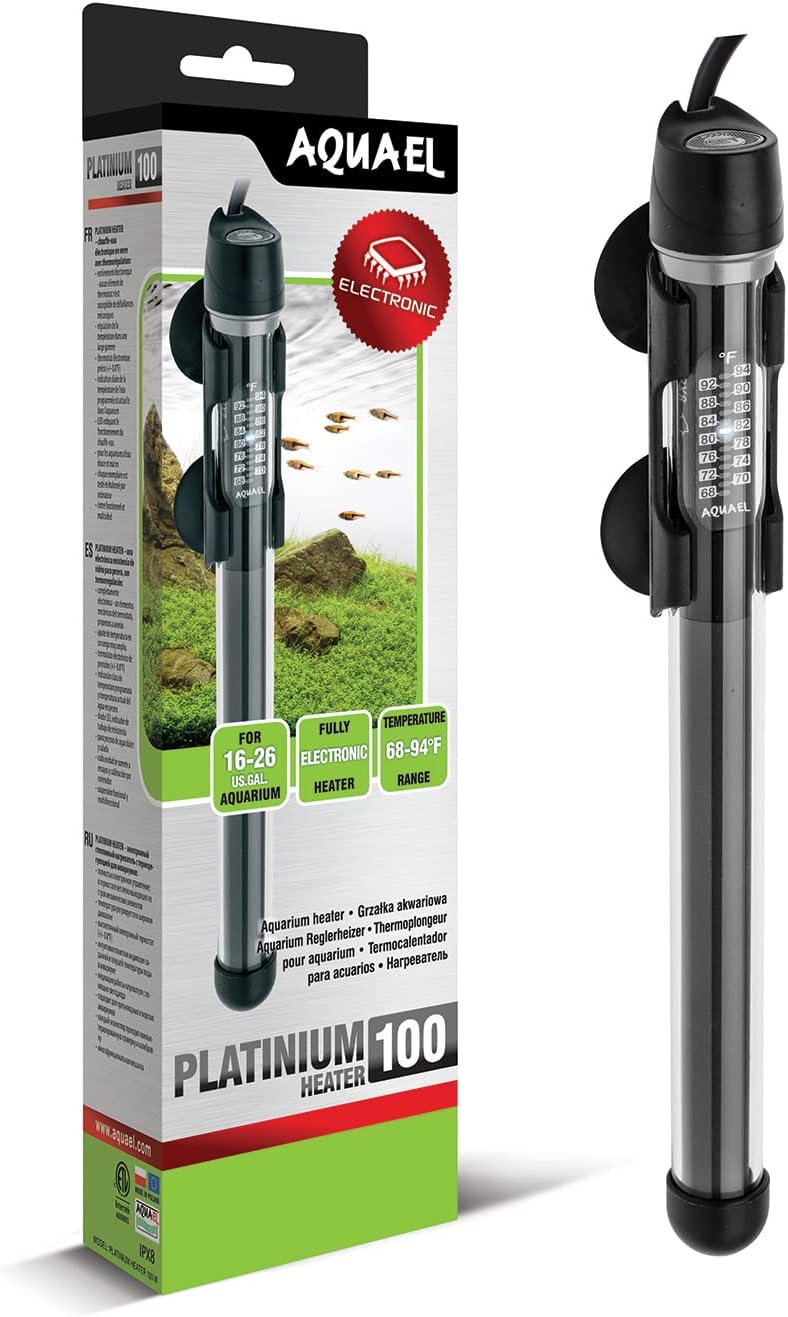How do I choose the right size aquarium heater?
To choose the right size aquarium heater, you need to consider the wattage and tank size. As a general guideline, it is recommended to have around 2.5-5 watts per gallon of water. However, larger tanks may require more powerful heaters to maintain the desired temperature.
Can I use multiple aquarium heaters in one tank?
Yes, you can use multiple aquarium heaters in one tank, especially in larger aquariums. This can ensure better heat distribution and provide redundancy in case one of the heaters fails.
How long do aquarium heaters last?
The lifespan of an aquarium heater can vary depending on the brand, quality, and usage. On average, a well-maintained and high-quality aquarium heater can last for 2-5 years. However, it's recommended to regularly check and replace heaters if any signs of malfunction or damage occur.
Should I keep the aquarium heater on all the time?
In most cases, it's recommended to keep the aquarium heater on all the time to maintain a stable and consistent temperature. However, it's crucial to regularly monitor the temperature and make adjustments if necessary to avoid overheating or temperature fluctuations.
Are aquarium heaters safe for fish and other aquatic pets?
Yes, aquarium heaters are generally safe for fish and other aquatic pets when used correctly. However, it's essential to choose heaters with safety features like automatic shut-off and overheat protection. Regularly checking the heater's condition and water temperature is also important to ensure the well-being of your aquatic pets.
Can aquarium heaters be used in saltwater aquariums?
Yes, many aquarium heaters are suitable for both freshwater and saltwater aquariums. However, it's crucial to choose a heater specifically designed for saltwater use to ensure durability and resistance to corrosion.
How can I maintain and clean my aquarium heater?
To maintain and clean your aquarium heater, follow these steps: 1. Unplug the heater and let it cool down. 2. Remove the heater from the tank. 3. Gently wipe the surface of the heater with a soft cloth to remove any debris. 4. Check the heater for any signs of damage or wear. 5. If necessary, use a brush or cotton swab to clean the heater's vents or crevices. 6. Rinse the heater with clean water. 7. Before reattaching the heater to the tank, ensure it is completely dry. Regular maintenance and cleaning can help prolong the lifespan and ensure the efficient operation of your aquarium heater.
Can I use an aquarium heater without a thermostat?
Most aquarium heaters come with built-in thermostats for temperature control. However, some advanced aquarium setups may require external thermostat controllers for precise temperature regulation. It's important to follow the manufacturer's instructions and recommendations when using aquarium heaters without built-in thermostats.
What should I do if my aquarium heater is not heating the water?
If your aquarium heater is not heating the water, there could be several possible causes: 1. Check the power source and ensure the heater is properly connected. 2. Make sure the temperature setting is adjusted correctly. 3. Clean the heater and remove any debris that may be obstructing the heating element. 4. Check for any visible signs of damage or wear. 5. If none of these steps resolve the issue, it may be necessary to replace the aquarium heater.
































![3 HP Arctica Aquarium Chiller, 230V [Misc.]](https://m.media-amazon.com/images/I/41SGB3Ghp-L._AC_US218_.jpg)

















